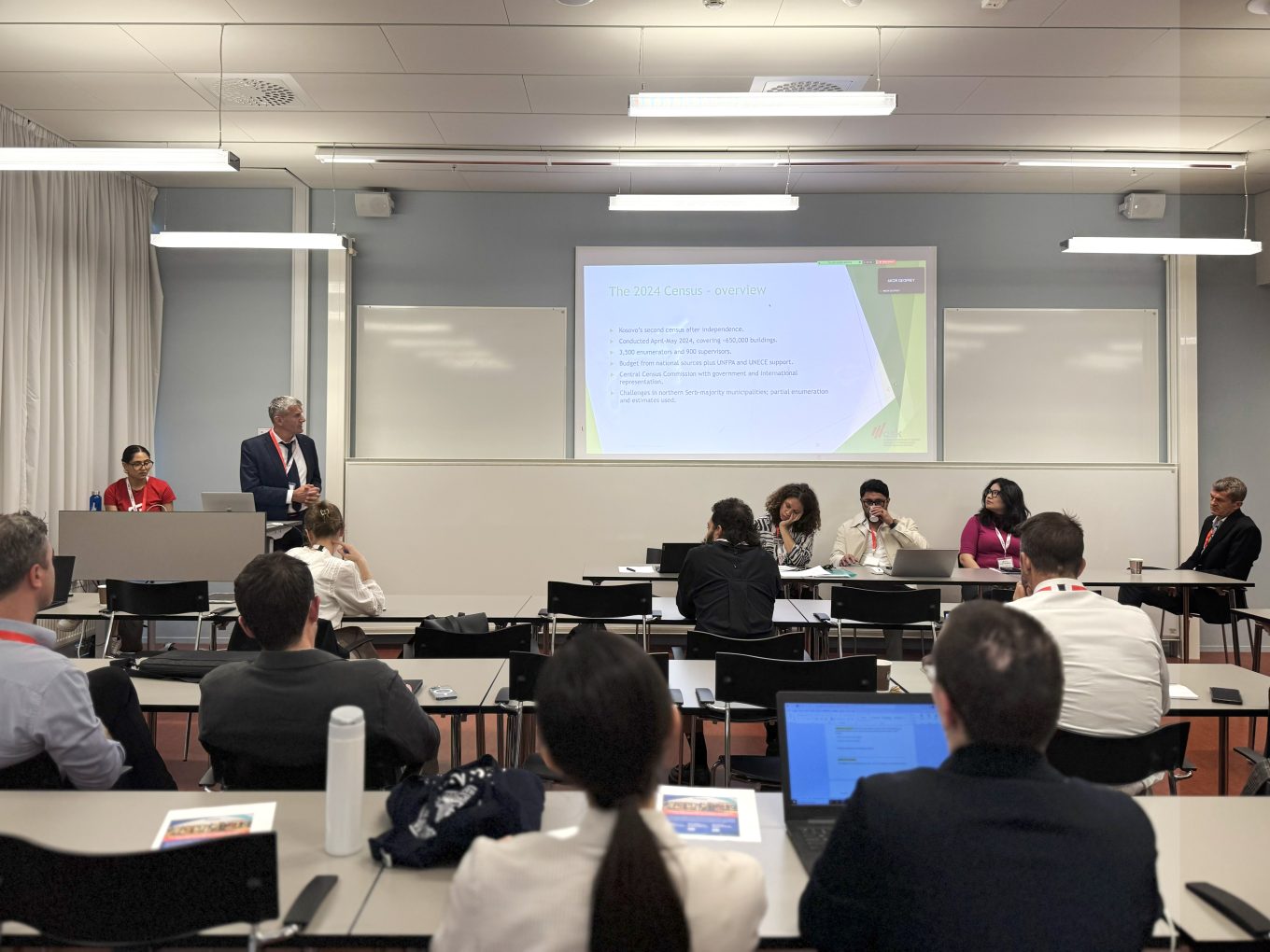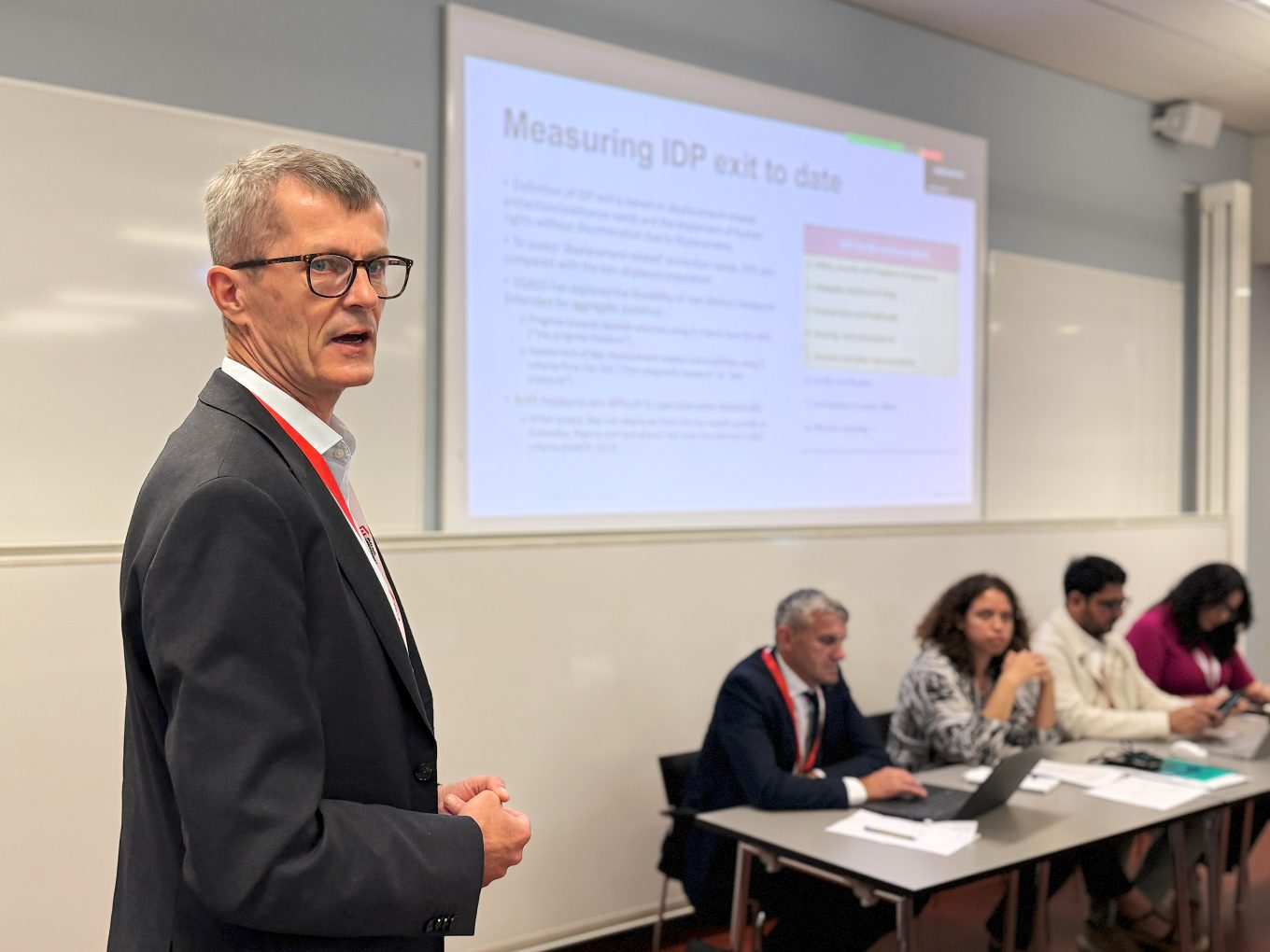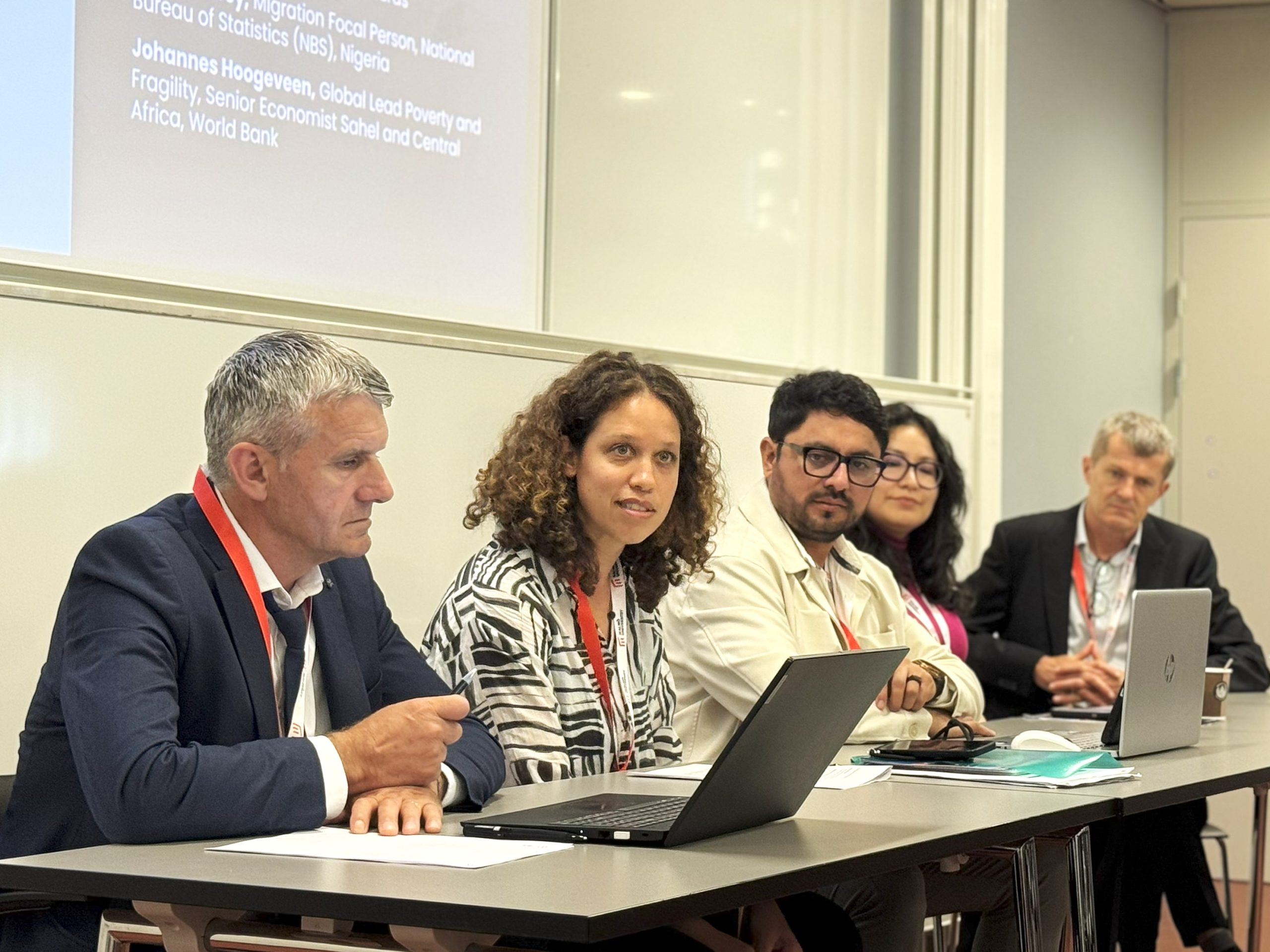17th June 2025
Cross-border movements have long dominated discussions about human mobility, but internal migration and understanding dynamics surrounding those who are forced to flee their homes within their own territory is also important. To address what has become an increasingly urgent statistical challenge as internally displaced populations continue to grow worldwide, EGRISS organised a parallel session at the 4th International Forum on Migration Statistics (IFMS). Natalia Baal, Head of the EGRISS Secretariat, moderated the event, which showcased how the International Recommendations on IDP Statistics (IRIS) are transforming national approaches to counting this population.
The endorsement of IRIS by the UN Statistical Commission in 2020 represented a watershed moment for IDP statistics, providing the first internationally agreed framework for countries to systematically collect data on these populations. Following initial delays due to COVID-19’s impact on data collection activities, implementation efforts have gained momentum, with 55 different uses of these Recommendations monitored through the Global Annual Inclusion (GAIN) Survey by national statistical systems worldwide. This uptake demonstrates how countries are increasingly integrating IDP statistics into their data infrastructure through diverse approaches including surveys, censuses, and administrative data systems.
The experiences shared during this session highlighted both the challenges and opportunities in strengthening IDP statistics from a development perspective. Presentations from Avni Kastrati (Director of Social Statistics of Kosovo Statistics Agency), Gabriel Auxume (Head of Planning of Honduras’ National Institute of Statistics), and Akor Geofrey (Migration Focal Person at Nigeria’s National Bureau of Statistics) showcased distinct national approaches, emphasizing the growing trend of national ownership in IDP statistical production. The session concluded with insights from Johannes Hoogeveen (Global Lead Poverty and Fragility at the World Bank) on the value of improved national IDP statistics from a development perspective and ongoing efforts to refine methodologies for measuring exits form the IDP stock—a critical consideration as national systems expand their capacity to count these populations.

Avni Kastrati shared how his country integrated IDP questions into their 2024 national census. Despite historical complexities and ongoing political tensions, particularly in northern regions, Kosovo successfully incorporated crucial questions about residence history and reasons for relocation to capture both IDPs and stateless persons. While IDPs represent less than one percent of Kosovo’s population, he emphasized the importance of asking displacement-related questions to the entire population during face-to-face enumeration. The Kosovo Agency of Statistics plans to publish a dedicated report on IDPs and stateless persons by year-end, working closely with UNHCR and the Ministry of Communities and Return to enable targeted registration and deeper survey work once displacement patterns are better understood through the census data.
Gabriel Auxume outlined Honduras’s systematic approach to improving IDP statistics, building on the IRIS framework and national legislative foundations established over the past decade. For instance, Honduras officially recognized forced displacement due to violence in 2012 and in the following year created the Inter-Institutional Commission for the Protection of Persons Internally Displaced by Violence (CIPPDV). This culminated in 2020 when the National Congress approved comprehensive legislation for the prevention, care, and protection of internally displaced persons. INE included IDPs in the multi-round Permanent Multipurpose Household Survey 2023 (EPHPM). The institute has conducted multiple data collection rounds with support from UNHCR and IOM, refining methodological approaches and are preparing to integrate IDP questions into the upcoming 2025 national census. In addition, it has taken a leadership role in regional capacity building, heading the ECLAC working group to develop a practical guide for producing harmonized statistics on forced displacement and migration across Latin America and the Caribbean. Looking ahead, Honduras plans to launch a dedicated microsite for IDP statistics and is working to further disaggregate displacement causes, particularly those related to climate change.

Joining the session online, Akor Geofrey outlined progress made in Nigeria through the country’s first nationally-led Survey on Internally Displaced Persons, while acknowledging challenges that remain in achieving comprehensive displacement statistics. Despite its limitation to camp-based IDPs in selected states, the survey applied IRIS recommendations in questionnaire design, particularly for identification and capturing socio-economic characteristics to inform pathways to durable solutions. The results revealed that almost 80% of IDPs face acute challenges including inadequate shelter and clothing, providing crucial baseline data for policy responses. Geofrey emphasized three critical areas requiring attention: securing adequate funding for broader geographic coverage of national IDP statistics, developing mechanisms to better monitor spontaneous exits from camps, and most significantly, creating reliable methods to identify and count IDPs living within host communities.
Johannes Hoogeveen highlighted why from a development perspective better national statistics on IDPs are so valuable. He also addressed the challenging aspect of determining when someone should no longer be counted as internally displaced, by sharing some work-in-progress being developed under EGRISS’ Technical Subgroup on Methodological Research and Guidance Development. He explained how the work was grounded in the IASC Framework on Durable Solutions for IDPs and the IRIS and uses empirical analysis to test and refine possible metrics including consideration of established poverty measures and mechanisms for assessing whether IDPs face greater discrimination than other groups in society. Results from Central African Republic were shared during the presentation.

_
In addition to this session, another parallel session organised by the Joint IDP Profiling Service showcased interesting examples of how the IRIS are informing methods to measure progress towards durable solutions in practice. This discussion brought together representatives from Colombia and Somalia to present how both countries have approached the challenge of building robust, nationally-owned data systems for IDPs. In 2024, supported by the Internal Displacement Solutions Fund (IDSF), both countries embarked on a joint UN-government journey to strengthen their national IDP data systems.
Resources

